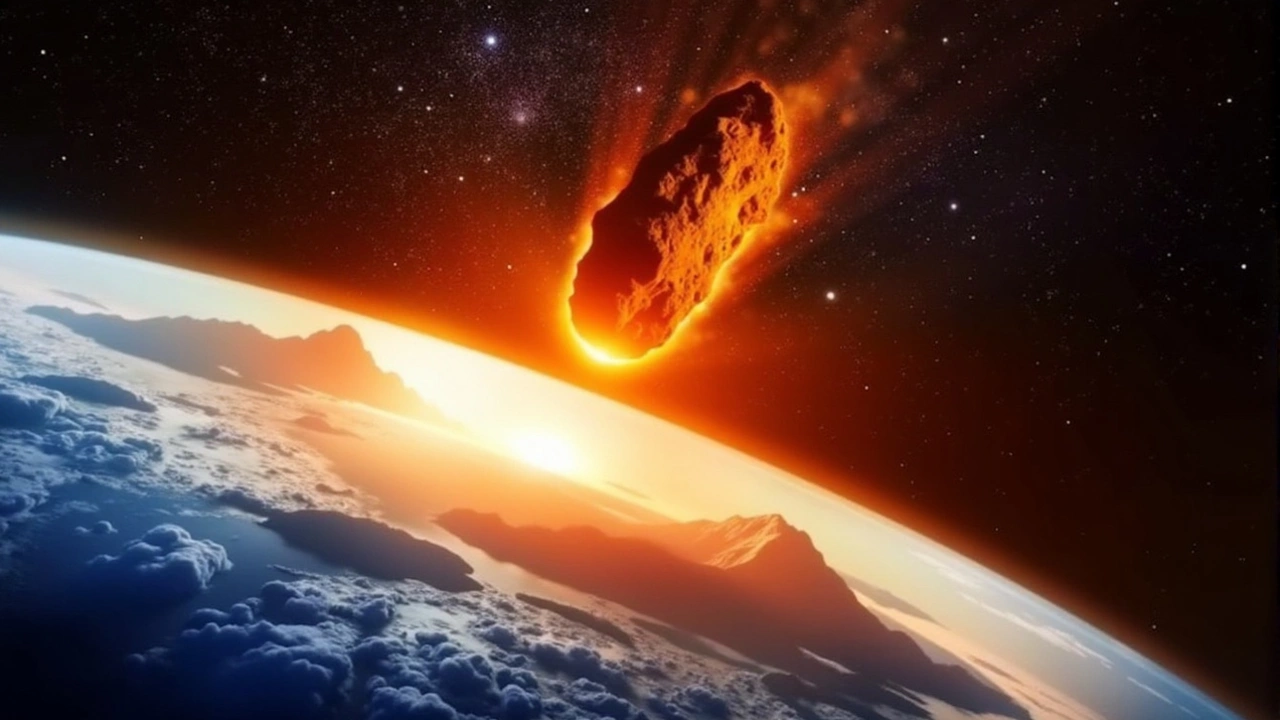The Discovery of 2024 YR4
In the vastness of space, where mysteries abound and celestial bodies keep to their ancient paths, a new player has surfaced, edging its way into humanity's existential theater. The asteroid named 2024 YR4 has garnered the spotlight, thanks to the diligent work of astronomers at the Asteroid Terrestrial-impact Last Alert System (ATLAS) in Rio Hurtado, Chile. The discovery was marked on an ordinary day, December 27, 2024, quickly transforming it into one of extraordinary significance. As it stands, the asteroid's defining feature—besides its astronomical trajectory—is its towering effect on collective human consciousness. With diameters stretching between 130 and 328 feet, this asteroid has been dramatically dubbed a potential 'city-killer', a term invoking both awe and concern.
Trajectory and Risk Assessment
Astronomers and space agencies worldwide, including the European Space Agency (ESA), have been poring over data to unravel the arcane complexities of its course. Current trajectories suggest a slim 1.3% chance of impact with our planet on December 22, 2032. Conversely, the overarching likelihood—spinning out to an expansive 99%—is that the asteroid will pass harmlessly by, a temporary sojourner in Earth's cosmic vicinity. This slender filament of fate places a margin of uncertainty that demands meticulous scrutiny.
The asteroid's journey unfolds on a nearly straight trajectory, a celestial march that casts an enigmatic shadow over future probabilities. Owing to this linear path, space experts are finding it challenging to pin down its definitive orbit. Yet, this only fuels the vigor with which international scientific apparatuses have mobilized. The magnitude of a potential asteroid impact stirs up vivid memories of historical events—the prodigious blast over Tunguska in 1908, which unleashed devastation over the Siberian taiga, stands as a stark emblem of our planet's fragile dance with space.
Global Observation Efforts
As the world remains poised on a precipice of cosmic watchfulness, the ostensible drama unfolds with global telescopic surveillance. Institutions like the European Southern Observatory have employed their Very Large Telescope in pursuit of gathering comprehensive data on 2024 YR4. Every cadre of scrutiny offers a piece more in the puzzle of safeguarding Earth's celestial neighborhood, underscoring the power and necessity of scientific collaboration on a planetary scale.
The eyes of international facilities such as the International Asteroid Warning Network (IAWN) and the Space Mission Planning Advisory Group (SMPAG) are now captivated by this errant traveler from afar. In 2028, a window of reinvigorated visibility is expected to open, presenting further opportunities for surveillance and recalibration of the asteroid's status. Meanwhile, the ESA employs the Torino Impact Hazard Scale, a barometer of imminent risk, in pegging the asteroid's current categorization at Level 3. Prospects are optimistic for de-escalating this classification to a benign zero, once observations become more precise.
Contemplating the Future
Alongside the sober calculation of trajectories, a cultural narrative plays out, involving not merely scientists but citizens, policymakers, and storytellers across the globe. The concept of a 'city-killer' asteroid resonates with modern folklore, a manifestation of both fear and precaution. It is in this collective imagination that the quest for answers finds its foil.
While scientific preparedness engages in cutting-edge monitoring, society grapples with the sober realities of potential disaster. The international scientific community is unyielding in its quest to perfect a vigilant lens upon which any celestial threat can be addressed. As much as we peer into the realm of probability and scientia, we also brace for an extraordinary act, one that compels readiness, ingenuity, and collaboration beyond borders. It is this paradigm of unity in the face of uncertainty that fuels the continued monitoring and preparation—efforts designed not merely to predict but, if necessary, to intervene.
Importance of Readiness and Monitoring
To this end, various mitigation strategies continue to be modeled—from deflection missions to more advanced concepts underpinned by theoretical physics. While the rolling of celestial dice suggests safety, the scars of historical impacts pivot the discourse towards proactive responsibility. This curiosity-driven vigilance is both a scientific endeavor and a testament to humankind’s resilience. As we disseminate information, raise public awareness, and foster cross-national coordination, the story of 2024 YR4 serves as an amplified tale of vigilance.
In a universe of infinite mysteries and probabilities, this narrative remains open-ended. Various odds and paths unfold before us, shrouded in both the enigmatic cloaks of uncertainty and the illuminated stretch of science. A once obscure speck on telescopic lenses now requires us all—scientists, citizens, and leaders—to engage deeply with the potential ramifications and to stand poised in operational unity, ever-ready to act on new discoveries. Humanity's gaze remains on the heavens, balanced between the stars’ promise and their inherent, indifferent dynamism.
